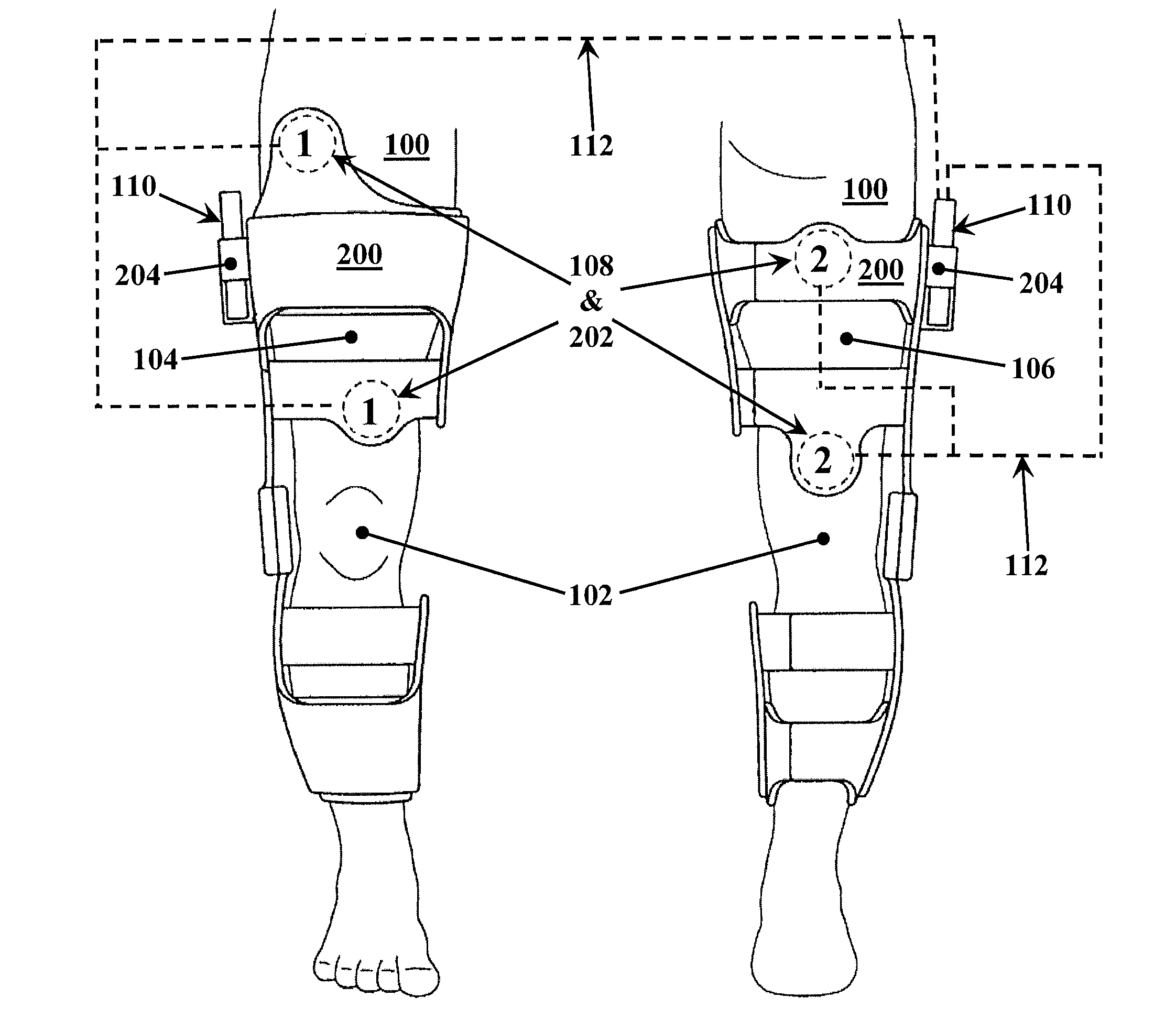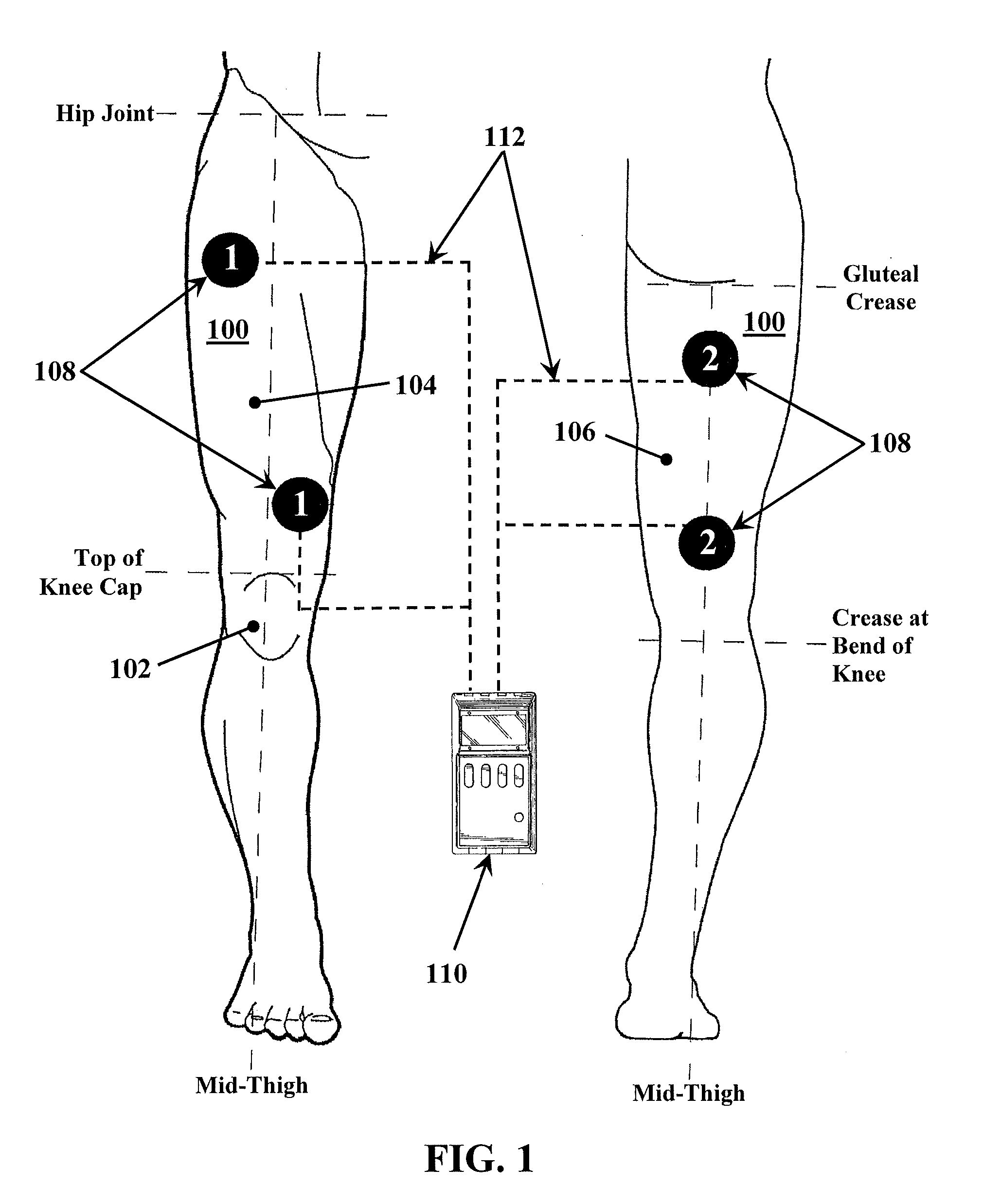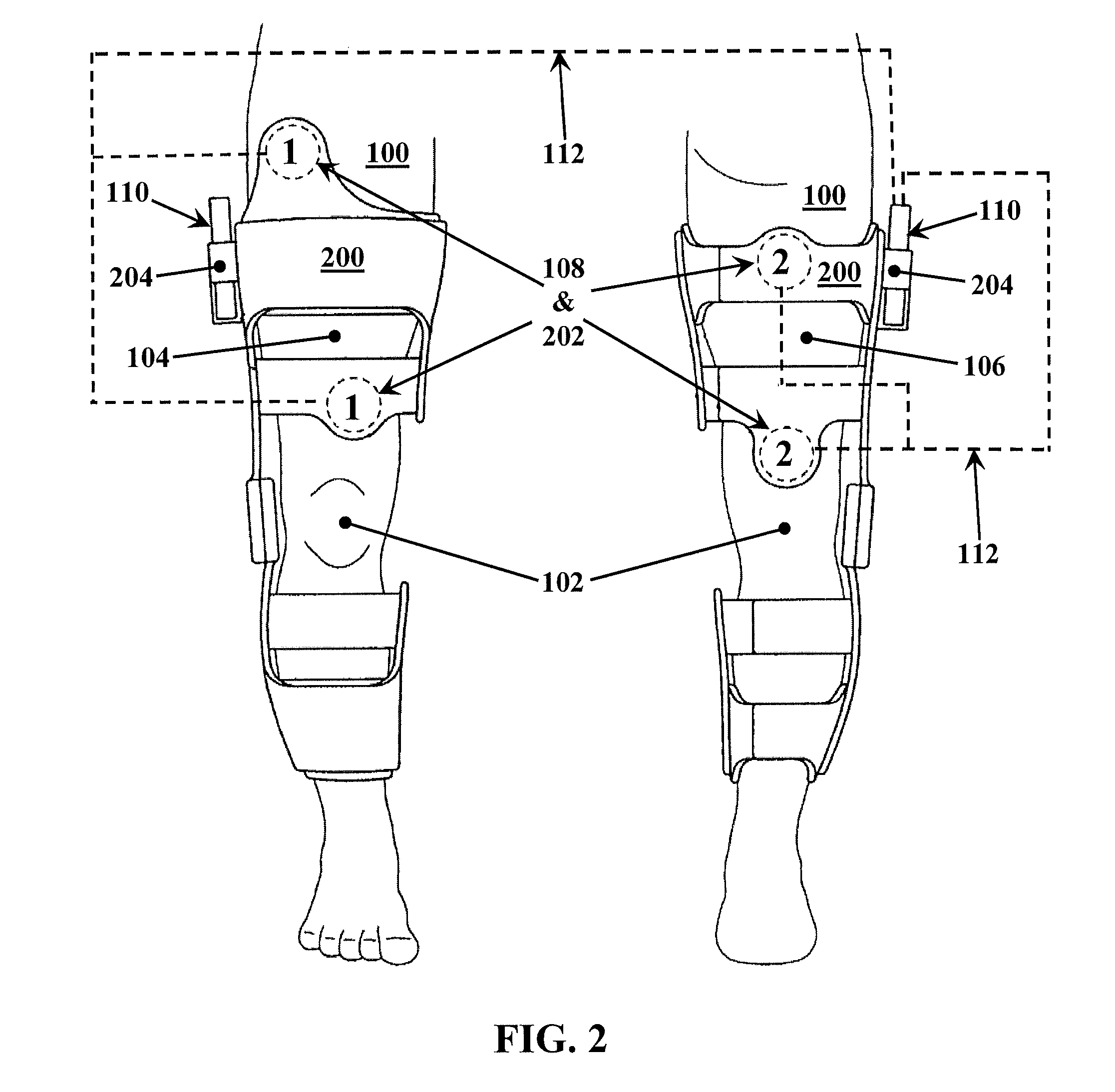Apparatus and method for stabilizing, improving mobility, and controlling cartilage matrix degradation of weight-bearing articular joints
a weight-bearing articular joint and apparatus technology, applied in the field of degenerative joint disease and osteoarthritis, can solve the problems of muscle failure, limited success in movement recovery, and rapid fatigue, and achieve the effects of controlling cartilage matrix degradation, improving mobility, and reducing compressive forces
- Summary
- Abstract
- Description
- Claims
- Application Information
AI Technical Summary
Problems solved by technology
Method used
Image
Examples
Embodiment Construction
[0028]The present invention overcomes the shortcomings of the prior art and provides at least the advantages discussed below by utilizing patterned electrical muscle stimulation in combination with a stabilizer to improve mobility of and to control cartilage matrix degradation in affected, weight-bearing, articular joints. Those and other advantages provided by the present invention can be better understood from the description of the preferred embodiments below and in the accompanying drawings. In describing the preferred embodiments, specific terminology is resorted to for the sake of clarity. However, the present invention is not intended to be limited to the specific terminology so selected, and it is to be understood that each specific term includes all technical equivalents that operate in a similar manner to accomplish a similar purpose. For example, although the preferred embodiments are directed to an articular segment that is a leg and a joint that is a knee, it is also co...
PUM
 Login to View More
Login to View More Abstract
Description
Claims
Application Information
 Login to View More
Login to View More - R&D
- Intellectual Property
- Life Sciences
- Materials
- Tech Scout
- Unparalleled Data Quality
- Higher Quality Content
- 60% Fewer Hallucinations
Browse by: Latest US Patents, China's latest patents, Technical Efficacy Thesaurus, Application Domain, Technology Topic, Popular Technical Reports.
© 2025 PatSnap. All rights reserved.Legal|Privacy policy|Modern Slavery Act Transparency Statement|Sitemap|About US| Contact US: help@patsnap.com



